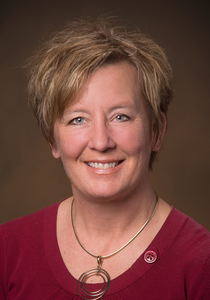Gundersen Expands Access, Using Telemedicine to Bring Subspecialties to Outlying Communities
// By Marcia Simon, APR //
 Most of Gundersen Health System’s patients live at least 25 miles from the main hospital campus in La Crosse, Wisconsin. For the benefit of both patients and physicians, Gundersen invested early in telemedicine.
Most of Gundersen Health System’s patients live at least 25 miles from the main hospital campus in La Crosse, Wisconsin. For the benefit of both patients and physicians, Gundersen invested early in telemedicine.
Suburban and rural patients perceived distance as a barrier to seeing a specialist, so Gundersen started exploring the potential of telemedicine 15 years ago, before it was well understood by participating physicians. The system’s telemedicine program launched with telestroke in one community. Today, Gundersen operates telestroke from 11 locations.
This is an example of provider-initiated telemedicine. With this model, a physician, PA, or APRN requiring further expertise connects digitally with a specialist or subspecialist who can consult, observe, and diagnose remotely, and prepare for a patient’s arrival if transfer is necessary.

Kimberly Hable, BSN, RN, referral relations and outreach development representative, Gundersen Health System
We spoke with Kimberly Hable, BSN, RN, referral relations and outreach development representative, and Jessica Easterday, BSN, RN, program manager for telemedicine, at Gundersen Health System to hear about the program’s launch and expansion.
The telemedicine program has expanded patient access, and by doing so, has increased patient acquisition. Hable explains, “One of our cardiologists was losing market share because he was in one office area once a month, and his main competitor was there twice a month. Being able to see new patients via telemedicine helped boost his business and stay relevant in the community.”
Are your providers losing patients because of access issues? A robust telemedicine program that offers convenient care for patients is one way to protect market share.

